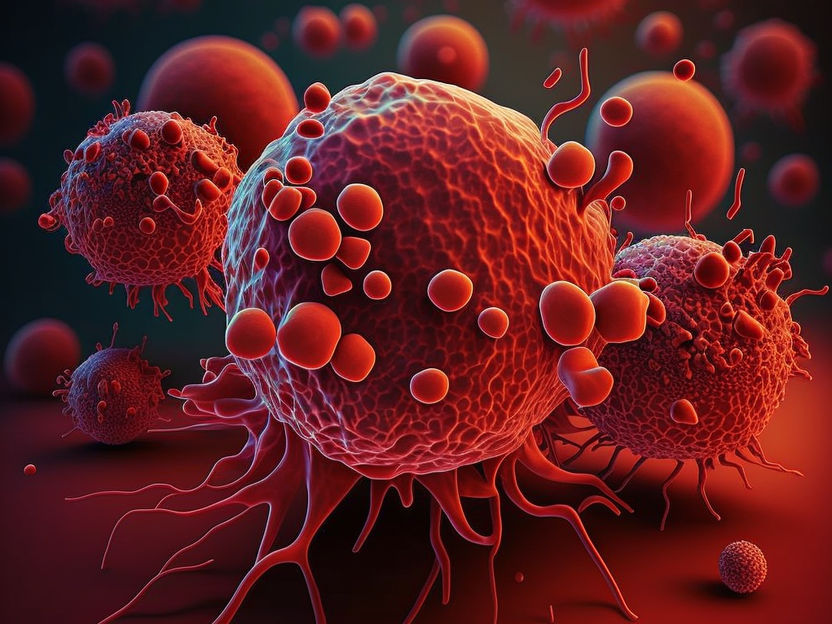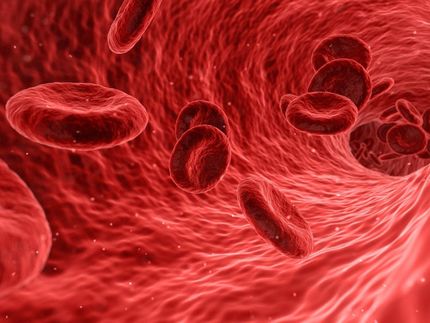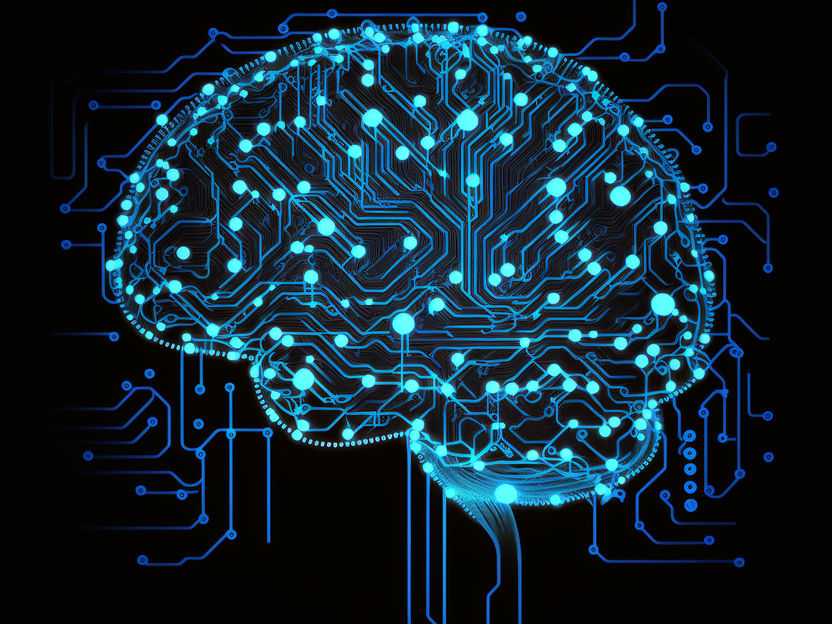Basic research opens up new therapeutic opportunities for fighting leukaemia
Important step in the fight against difficult-to-treat leukaemias
A research team led by scientists from the University of Veterinary Medicine Vienna (Vetmeduni) has taken an important step towards a better understanding of certain difficult-to-treat blood cancers. The researchers have identified the SBNO2 protein as a critical mediator of certain types of leukaemia – a finding that could potentially lead to novel therapeutic approaches.

Symbolic image
Computer-generated image
In blood cancers such as leukaemia, molecular signalling pathways are often deregulated. This leads to uncontrolled cell division. A frequently found cause of such a deregulation is a mutation in the gene STAT3, which is a focus of the Viennese research group. Current therapeutic options lead to an unsatisfactory response rate and no cure for these STAT3-driven malignancies exist. Therefore, the Vetmeduni researchers investigated the mechanism behind these blood cancers in a study that was recently published in the journal Blood: Which genes are activated by mutant STAT3? And which of these genes are necessary for cancer cell survival?
Veronika Sexl, supervisor of the study and head of the Institute of Pharmacology and Toxicology at Vetmeduni: “We know from previous research that STAT3 plays an important role in haematological cancers, but little is known about the exact molecular mechanisms contributing to disease development. As targeted therapy of mutated STAT3 in patients is currently not possible, our focus lies on finding new therapeutic approaches.”
Protein SBNO2 essential for leukaemia driven by STAT3 mutations
In a collaborative study involving international experts in the research field, the latest genomics technology was used to investigate mechanisms associated with mutated STAT3. The CRISPR-Cas9 screening technology, referred to as the “gene scissors” technique, helped to identify an essential protein in mutant STAT3-driven malignancies: SBNO2. “The exciting thing about our work is that we discovered a global mechanism that applies to all STAT3-driven haematological malignancies,” says the study’s first author, Tania Brandstötter from the Institute of Pharmacology and Toxicology at Vetmeduni.
Knowledge about the importance of SBNO2 in STAT3-driven leukaemias and lymphomas reveals novel therapeutic opportunities and provides the basis for a number of future studies.
Original publication
Most read news
Original publication
T. Brandstoetter, J. Schmoellerl, R. Grausenburger, S. Kollmann, E. Doma, J. Huuhtanen, T. Klampfl, T.Eder, F.Grebien, G.Hoermann, J.Zuber, S.Mustjoki, B. Maurer und V. Sexl; „SBNO2 is a critical mediator of STAT3-driven hematological malignancies”; Blood; 2023
Topics
Organizations
Other news from the department science

Get the life science industry in your inbox
By submitting this form you agree that LUMITOS AG will send you the newsletter(s) selected above by email. Your data will not be passed on to third parties. Your data will be stored and processed in accordance with our data protection regulations. LUMITOS may contact you by email for the purpose of advertising or market and opinion surveys. You can revoke your consent at any time without giving reasons to LUMITOS AG, Ernst-Augustin-Str. 2, 12489 Berlin, Germany or by e-mail at revoke@lumitos.com with effect for the future. In addition, each email contains a link to unsubscribe from the corresponding newsletter.






















































